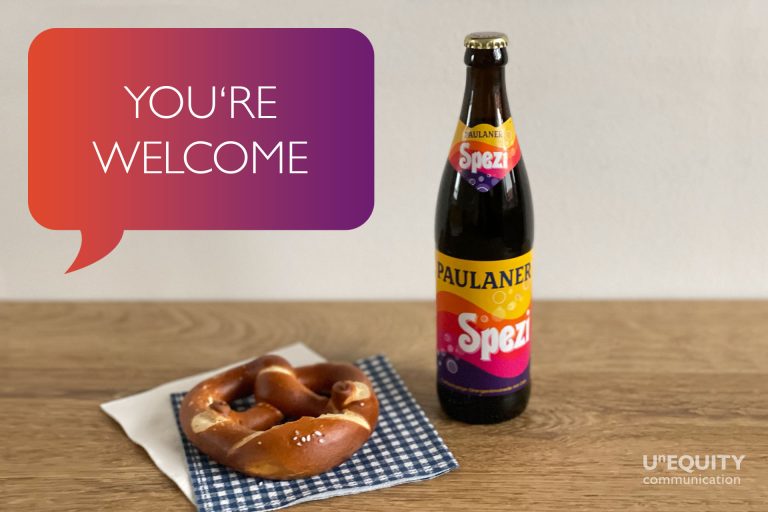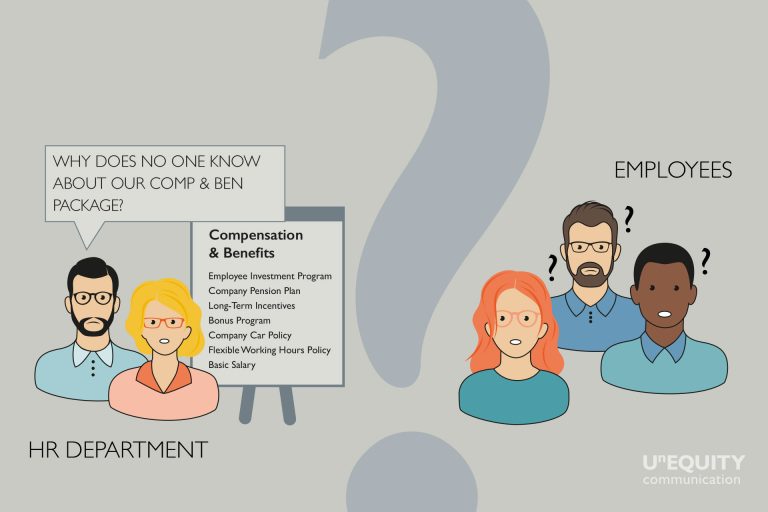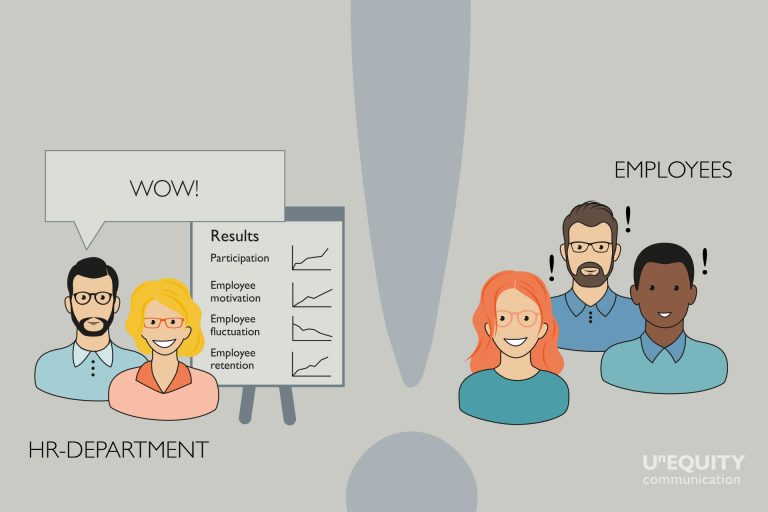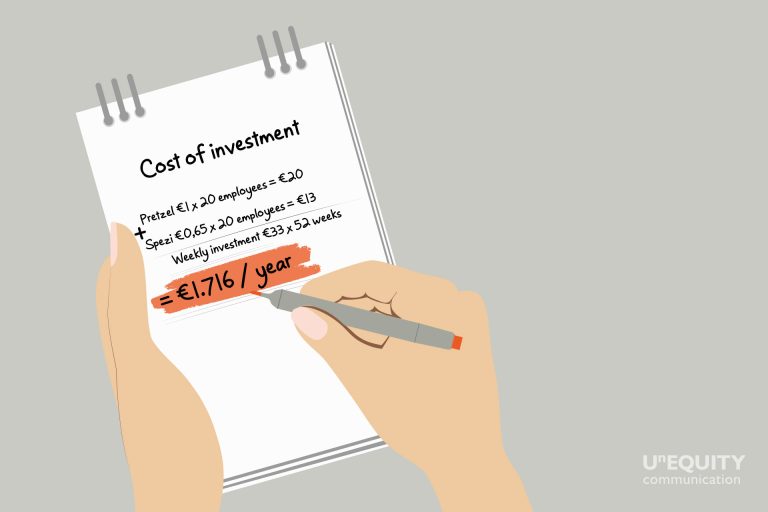
Good internal communication makes the difference
Someone told us the other day that the startup where he works offers only one “benefit.” Once a week, the boss buys a bag of pretzels and a couple of bottles of a German soda called Spezi. He dumps them in the kitchen and says, “You’re welcome!”
Why are we telling you this story, and what’s the actual problem here? As is so often the case, lack of communication. The boss gives a gift to his employees. That’s a good start. But what is his motivation, what message does he want to send, and what message reaches his employees?
The answer is simply that no one knows. And even worse, his well-meaning gift looks worthless.

Communication brings good ideas to life

What did this company owner forget? As so often in communication, what’s missing is the story, the motivation. Maybe the boss could have told a story, for instance, of when he was a kid and would go hiking with his grandparents in the mountains. When they got to the end of the hike, they always stopped at a kiosk and bought him a delicious, buttered pretzel, and an ice-cold soda. To this day, he remembers this as an awesome reward after a long, hard day hiking the trails.
His message would be clear. With this story, he would tell his employees what this treat means to him, what experiences he associates with it, and – and here it comes – that he wants to express his appreciation to his employees in this way.
Because that’s what benefits are all about— expressing appreciation, thanking employees for the work they put in every day, and giving them something that shows recognition of their efforts. Companies use benefits to ensure that employees feel valued and seen, so that they enjoy working for the company, and hopefully want to stay.
Of course, this story does NOT mean that companies should make up stories to deliver boring benefits to their workforce. But it does mean they should think about what’s on offer – and how it’s communicated.
Investing in employees
We did the math. A pretzel currently costs between €0.60 and €1.50 in Munich. Let’s split the difference and say it costs €1. Our guy is spending €20 a week at the bakery, and another €13 on a crate of 20 sodas. That brings us to €33 a week for a not-so-healthy snack (sugar, wheat, and salt!). That adds up to a fairly substantial €1,700 year for a benefit that his staff doesn’t even recognize as such.
The €1,700 that he invests in his employees each year goes completely to waste because the employees neither want nor appreciate the pretzels and soda. It might even have the opposite effect of irritating them, as evidenced by the comment, “The only benefit we get is pretzels and soda!”. He could certainly have more bang for his buck if they understood the reason behind the snacks.

The importance of employee benefits communication
There’s a German saying which translates to “Do good and talk about it.” This example shows how the second part of this saying is just as important as the first, especially in C&B communication. Don’t just do good. Talk about it!
Companies often offer their employees much more than pretzels and soda. Attractive benefits range from a company canteen to fitness and health perks to discounted company shares. These, at times quite costly, measures are designed to motivate employees to give their best every day, to stay with the company as long as possible, and to act as ambassadors to the outside world both for the company as an employer and for its brands and products—but they remain ineffective if they are barely communicated.
Unequity's Commitment
A professional employee benefits communication campaign takes into account the recipients’ individual needs and has a demonstrable and lasting effect. At Unequity, when we design an employee communications campaign, we start with a comprehensive inventory. It is not uncommon for this to reveal that employees’ don’t know much about the benefits offered by the company. In many cases, it makes sense to start by communicating the existing employee benefits before highlighting individual measures. In conclusion, internal communication campaigns are often more complex than they seem. They require excellent preparation, extensive expertise and experience, and creative thinking.
In our blog post on targeted employee communication, you can find out how we approach such campaigns. Or contact us directly, and we’ll talk about your communications challenge—if you like, we can meet in person at our Munich office. We’ll bring the pretzels and soda! We look forward to seeing you.
- This article was published on
Share this page directly: